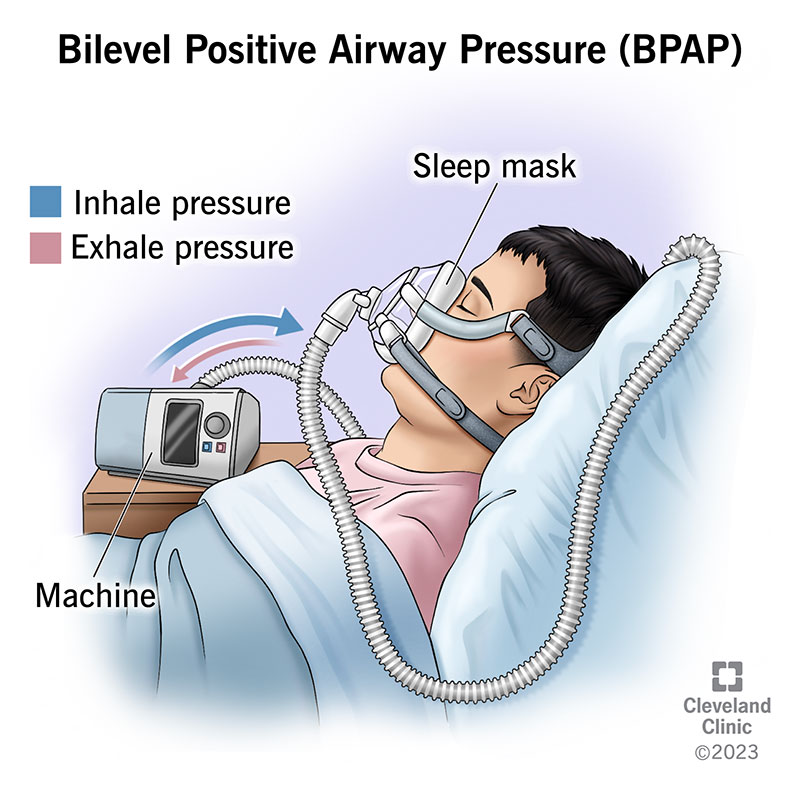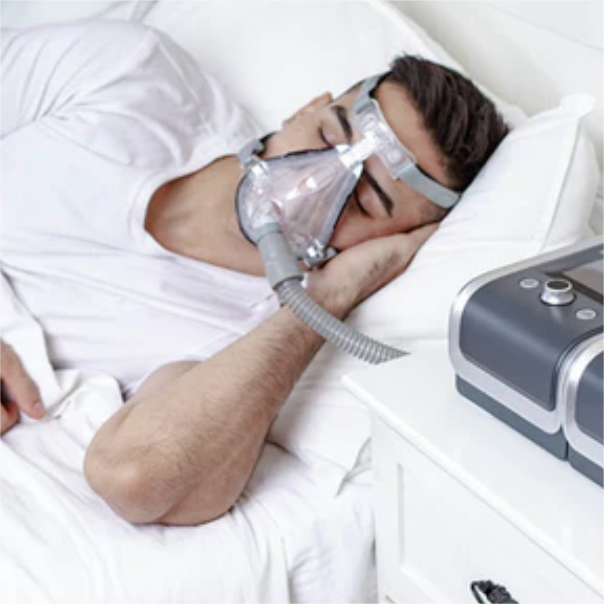Save Money with Convenient BiPAP Rental Strategies
Save Money with Convenient BiPAP Rental Strategies
Blog Article
Bipap vs. CPAP: Which Is the most effective for Your Sleep Disorder?
When navigating the intricacies of rest conditions, the selection between BiPAP and CPAP therapy is a critical consideration. While CPAP gives a constant airflow appropriate for obstructive sleep apnea, BiPAP's dual stress settings might improve comfort for those with more complex respiratory problems.
Recognizing Sleep Disorders
Sleep disorders include a variety of conditions that interrupt regular sleep patterns, influencing both the top quality and duration of remainder. These problems can show up in numerous kinds, including sleeping disorders, rest apnea, narcolepsy, agitated leg syndrome, and parasomnias. Each condition presents distinct difficulties, commonly causing significant daytime exhaustion, cognitive problems, and emotional disturbances.
Sleeping disorders is characterized by trouble falling or remaining asleep, while sleep apnea involves duplicated disruptions in breathing throughout rest, often causing fragmented remainder. Narcolepsy, on the other hand, is noted by extreme daytime drowsiness and sudden rest strikes. Agitated leg disorder causes awkward experiences in the legs, motivating an unmanageable urge to relocate them, which can also impede the ability to go to sleep.
The impact of rest conditions extends past private health, influencing overall productivity, connections, and lifestyle. Recognizing the details nature of each disorder is vital for efficient diagnosis and therapy. As sleep health and wellness becomes progressively identified as an important element of total wellness, attending to these conditions is crucial for boosting both sleep top quality and everyday functioning.
How CPAP Works
Continuous Favorable Air Passage Pressure (CPAP) treatment is frequently employed as a primary treatment for obstructive rest apnea (OSA) The mechanism of CPAP includes the use of an equipment that supplies a stable stream of air with a mask used throughout rest. This air flow maintains positive pressure in the airway, avoiding the collapse or blockage of the throat that can happen during sleep.
When a person takes in, the CPAP device gives a constant flow of air, making sure that the respiratory tract continues to be open - BiPAP Rental. This not only minimizes the signs of OSA, such as snoring and disrupted rest patterns, however likewise minimizes the involved health and wellness dangers, including cardio complications and daytime tiredness
The stress settings on a CPAP machine can be personalized to satisfy private client needs, typically determined with a rest research. Individuals generally undergo titration researches to discover the optimal stress degree for their distinct condition. Routine follow-up and adjustments might be required to ensure performance and convenience. In general, CPAP treatment has been revealed to substantially enhance the top quality of sleep and total wellness for people enduring from obstructive sleep apnea.
How BiPAP Works
BiPAP, or Bilevel Favorable Respiratory Tract Stress, is a customized kind of non-invasive ventilation that is especially useful for people with problems such as intricate rest apnea or respiratory system problems. Unlike CPAP, which supplies a continuous stream of air at a single pressure, BiPAP supplies two unique stress setups: a greater inspiratory stress for inhalation and a lower expiratory pressure for exhalation. This dual-pressure method enables less complicated breathing, reducing the initiative called for throughout exhalation.
The gadget operates through a mask fitted over the nose or mouth, connected to a machine that creates air stress. When the individual inhales, the device delivers the greater pressure to assist with airflow, ensuring that the respiratory tract stays open. Upon exhalation, the device immediately decreases the pressure, making it extra comfy for the client to breathe out.

Key Differences Between BiPAP and CPAP

On the other hand, BiPAP (Bilevel Favorable Respiratory tract Pressure) uses 2 different pressure settings: one for breathing and a reduced one for exhalation. This dual pressure system enables for even more comfy breathing, particularly for individuals that deal with exhaling against a constant pressure. BiPAP is often suggested for individuals with intricate rest apnea, chronic obstructive pulmonary disease (COPD), or those who need extra assistance throughout rest.
Moreover, the complexity of BiPAP gadgets generally results in a higher cost and calls for a lot more cautious titration than CPAP. BiPAP Rental. Understanding these vital differences can aid in recognizing which device might be a lot more suitable for certain rest disorders, setting the groundwork for educated treatment decisions
Choosing the Right Treatment
Just how can one determine one of the most ideal treatment for handling sleep conditions? The decision between BiPAP and CPAP treatment largely pivots on the certain attributes official statement of the rest condition, the client's overall wellness, and their convenience with the gadget. CPAP, which delivers a continuous stream of air, is generally suggested for obstructive sleep apnea (OSA) It maintains an open respiratory tract throughout sleep, effectively preventing hypopneas and apneas.
Conversely, BiPAP gives two degrees of pressure: one for breathing and a reduced one for exhalation. This dual stress system is helpful for clients with complicated sleep apnea or those who experience problem exhaling against a continual stress. In addition, BiPAP is commonly suggested for people with breathing problems, such as chronic obstructive lung disease (COPD), where varying stress settings can boost comfort and compliance.
Inevitably, a complete assessment by a rest specialist, including a sleep research, can help figure out which treatment aligns finest with the person's needs. Aspects such as comfort, simplicity of usage, and specific medical conditions need to also be thought about to optimize treatment results.
Conclusion
In summary, both BiPAP and CPAP serve unique functions in the administration of rest problems. CPAP works for obstructive sleep apnea through consistent airflow, while BiPAP provides double pressure settings that enhance convenience for those with intricate rest apnea or respiratory system concerns. The selection in between these treatments need to be guided by specific demands and problems, demanding a thorough analysis by a rest expert to guarantee optimum treatment end results and improved high quality of rest.

Generally, CPAP treatment has actually been shown to considerably enhance the my review here top quality of sleep and overall health and wellness for people enduring from obstructive sleep apnea.
BiPAP is frequently suggested for people with complex sleep apnea, chronic obstructive lung illness (COPD), or those that call for additional support during sleep.
CPAP is effective for obstructive rest apnea with regular air movement, while BiPAP supplies twin stress setups that boost convenience for those with intricate rest apnea or respiratory system concerns.
Report this page